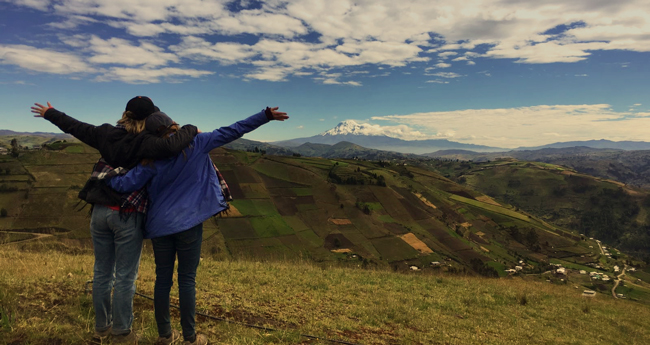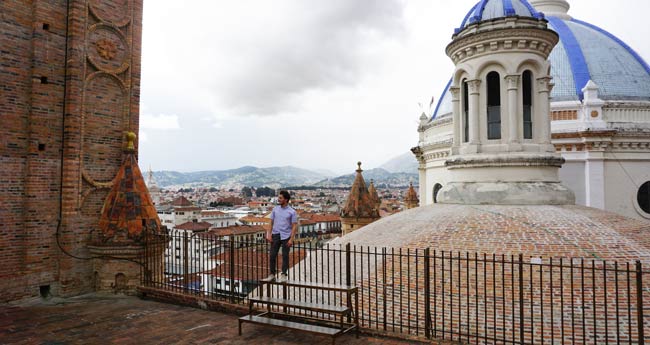Updated January 2023
Updated January 2023

Somewhere between writing personal essays or filling out job applications, you may have heard of a “gap year” or encountered a friend or classmate who is “taking a gap year.” But what does that mean exactly? A gap year is defined as “a period, typically an academic year, taken by a student as a break between secondary school and higher education” (Oxford English Dictionary). In reality, a gap year can take place at any point in a person’s life!
Some people may choose to take a gap year between graduating college and entering the working world while others may choose to take a gap year a decade into working, when they are considering a career change. The common denominator of all gap years is that they usually take place when someone is in between life stages.
It is important to note that a gap “year” can be as long or as short as you want it to be. Some people may take a gap year that is only 2-weeks-long, while other people may opt for a semester-long or year-long program.
A gap year is completely customizable and unique to you. When you take a gap year, where you spend your gap year, how long your gap year is, and what you do during your gap year are all unique to your goals and aspirations. Structured programs and dedicated organizations like Amigos de las Américas (AMIGOS) can help you navigate the ins and outs of planning and preparing for a gap year. Reading about other people’s experiences is also a great place to start if you’re considering a gap year!
To help narrow down your options, consider the four types of gap years: immersive, volunteer, personal, and academic. Most gap year programs fall into some combination of these categories.
In an immersive gap year program, participants spend a period of time living abroad—usually with a host family in a community or town away from high-tourism areas. Staying with a host family in a small town or less popular tourist destination allows you to truly immerse yourself in your cultural and environmental surroundings. You can expect to develop your language skills with native speakers, learn to cook traditional dishes, engage in community events and cultural practices, and more.
Volunteer gap year programs expose participants first-hand to issues affecting people and communities around the world. Through a volunteer gap year program, you can learn how to contribute to local initiatives while gaining insight about a different culture. There are hundreds of volunteer gap year opportunities available, so you can get involved in whatever you’re passionate about—from gaining business know-how at a fair trade shop to supporting education initiatives in a global context.
While it certainly can, a personal gap year doesn’t typically involve an outside organization or a structured program. A personal gap year means taking time to focus on whatever you need to or want to focus on before embarking on life’s next adventure. Maybe that means finally getting your fitness blog up and running or taking a cross-country road trip to see all the national parks in the U.S. A personal gap year could involve spending a few months volunteering abroad and then taking your experience and creating a similar volunteer program in your own community.
There is something to learn no matter what type of gap year you pursue, but an academic gap year is going to involve much more rigorous learning. In an academic gap year program, you will likely attend language classes, have an internship, engage in cultural workshops, and more. For example, with AMIGOS Gap Programs, you’ll learn how to design and implement a service project and take Spanish classes if you’re in Latin America!

What happens during a gap year depends on the type of gap year and the specific program you enroll in. AMIGOS Gap Program volunteers and alumni share blogs about their experience to provide more insight on the day-to-day of a gap year program. In a typical well-rounded gap year program, you can expect to:
AMIGOS Gap Year Programs offer a balance of structure and flexibility so you know upfront what you’ll learn and take away from your time abroad, but still have the independence and autonomy to shape a one-of-a-kind experience.
For example, in the AMIGOS Gap Semester in Ecuador you can expect to start the program with training, orientation, and getting acquainted with your host country and fellow gap students. After getting familiar with your new surroundings, you’ll begin Spanish language courses, participate in Spanish activities, and attend workshops. Over the months, you’ll continue to take Spanish classes and attend workshops, while also spending time on service projects. All AMIGOS Gap Programs have planned group excursions and holiday breaks to ensure that students have the opportunity to explore different regions of their host country.
Find out more details about our Gap Program by joining an info session!
Most gap year programs follow a similar application process. At AMIGOS, our Gap Program application process involves 6 steps:
At AMIGOS, we currently offer eight-week programs in Ecuador. While we focus on expanding cultural awareness in the Americas, there are hundreds of gap year programs that explore all corners of the world.
The AMIGOS online application takes about 30–40 minutes to complete and includes questions so that our program coordinators can get to know you better.
After you complete your online application, you will be contacted for an interview via phone or in person. During this interview, you’ll have the opportunity to tell us more about yourself, your interests, and your passions. At this time, we’ll also conduct a brief Spanish language assessment.
When an admissions decision has been made, you will be notified via email about the status of your application. If admitted into an AMIGOS Gap Program, you will receive a welcome packet in the mail with more information and a few fun surprises.
Once you are admitted into the program, you’ll need to pay a deposit to reserve your spot. We’ll work with you to finalize any outstanding paperwork, disburse your financial assistance package if you qualify, and get you and your parents scheduled for onboarding webinars.
As the start date of your program approaches, we’ll send you more details and packing lists to make sure you’re prepared for the adventure of a lifetime.
If you’re planning to apply for or embark on an AMIGOS Gap Program, our Admissions Officers work closely with you to make sure you set off on your adventure well-prepared. But if you’re still deciding on which programs to apply for or what to do during your gap year, we recommend that you start by reflecting on your goals during this time of transition.
Think about what you want to achieve or learn, about where you might want to go, who you want to spend time with, and why. Research various programs and scholarships using resources like the Gap Year Association—which also offers an in-depth guide to planning your gap year.
Once you have a better idea of the basics of your gap year, map out a timeline for the month, semester, or year you plan on taking off from school or work. Break down your time in a way that makes sense for you and that makes sense with the goals you’ve outlined. Consider life after your gap year as well—when do you want to start applying for jobs or colleges?
After your plan is in place, start applying for programs! Once you get accepted into a program, you can work with an Admissions Officer to prepare for your specific trip. Take some time to learn more about the people and places you’ll be visiting and to work out travel logistics like visa details, passports, and packing lists. AMIGOS will guide you through the visa, travel, and packing process.